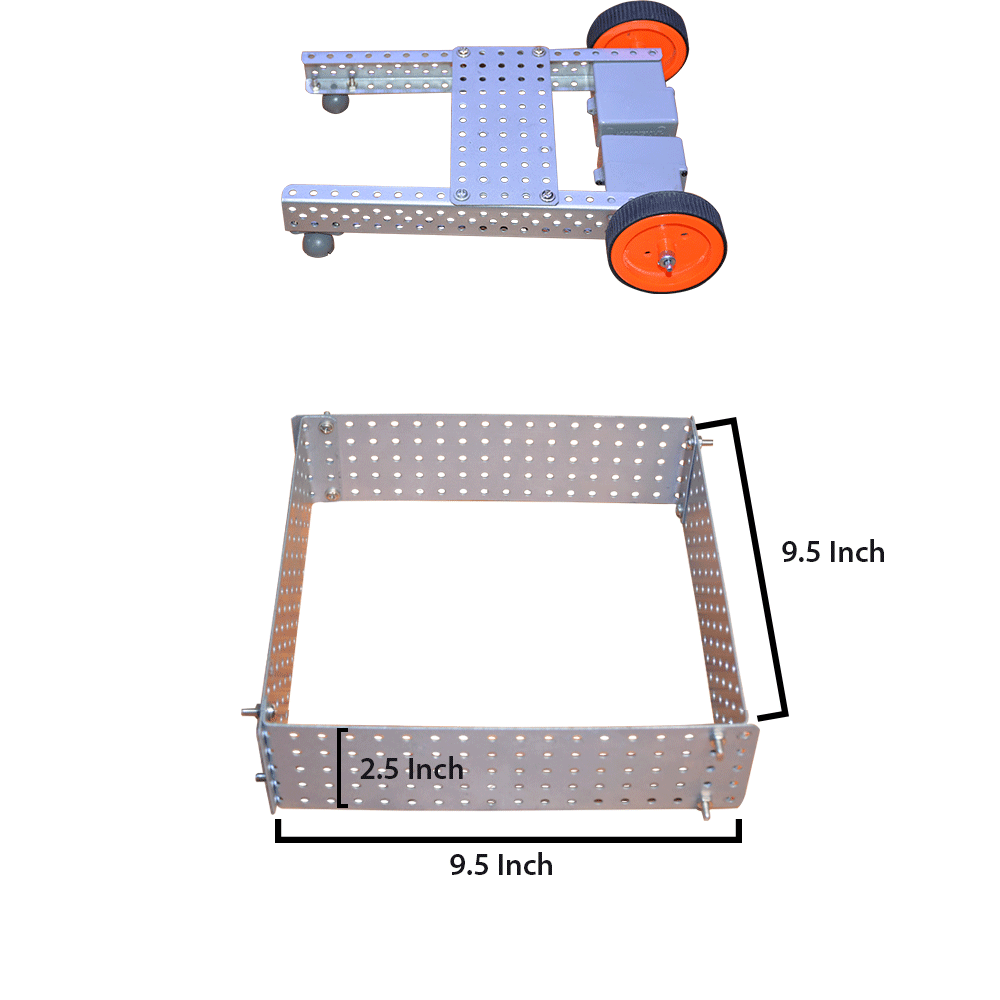IRC INTERNATIONALS
MIDDLE LEVEL PROBLEM STATEMENT
Problem Statement
To build one Autonomous and one Manual Robot that can carry out the task of cleaning the water bodies.
Real World Inspiration
Water bodies are being polluted at a very high rate. We should explore new ways to clean our oceans and shores in order to save the aquatic ecosystem and preserve the beauty of nature.
Actual Task Description
Robots are tasked to collect the props from the given areas and pass them to another robot. All the props should be eventually placed inside the cart to take it towards the dumping area and then finally dumping the props respectively.
Bot Information
| Name of the bot | Start Area | Maximum Size | Task |
|---|---|---|---|
| Bot 1-Name of Bot | Start Area No. 1 | Length: 9.5 Inches Width: 9.5 Inches Height: No limit | Bot 1 is tasked to collect the props from its designated area and pass it to Bot 2 while following the black line till the Passover zone. |
| Bot 2 -Name of Bot | Start Area No. 2 | Length: 9.5 Inches Width: 9.5 Inches Height: No limit | Bot 2 is tasked to collect the props from Bot 1 and beach area, and place them inside the cart. Bot 2 has to drag the cart till the cart end area. and place the props accordingly into the dumping zone. |
Arena Information
Start areas
Start area 1 is the start area for the first bot and Start area 2 is the start area for the second bot. And where robots will be kept at the start of the run.
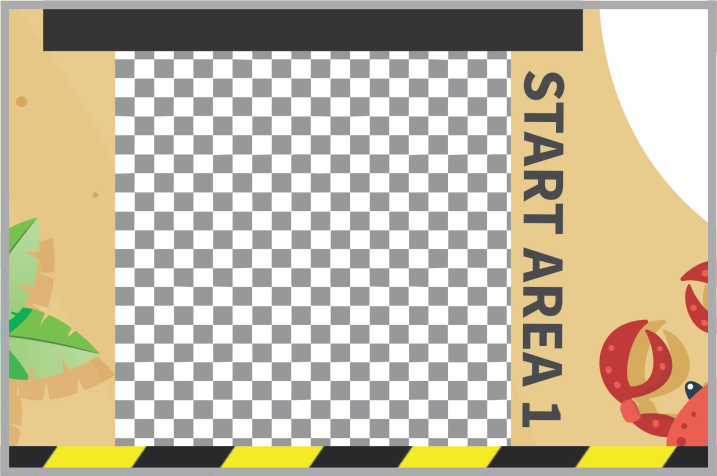
Start Area 1
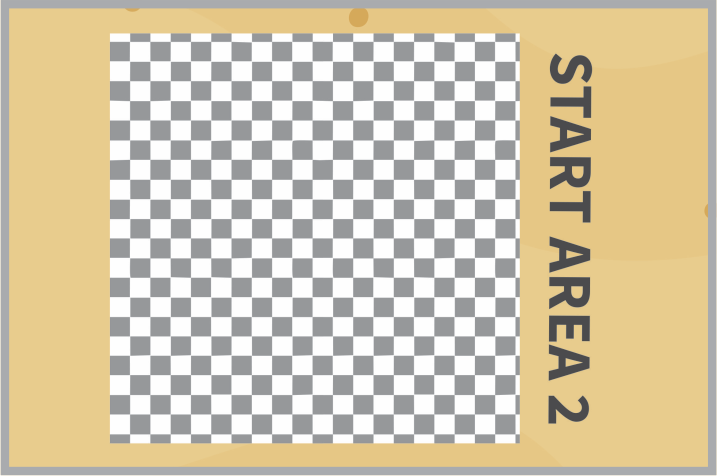
Start Area 2
Track
The Track (Including white area) is the area on which the robot needs to move and remove/drag/pick/place the props.

Track
Pickup zone
Pickup zones are the areas from which the autonomous bot should collect the props.
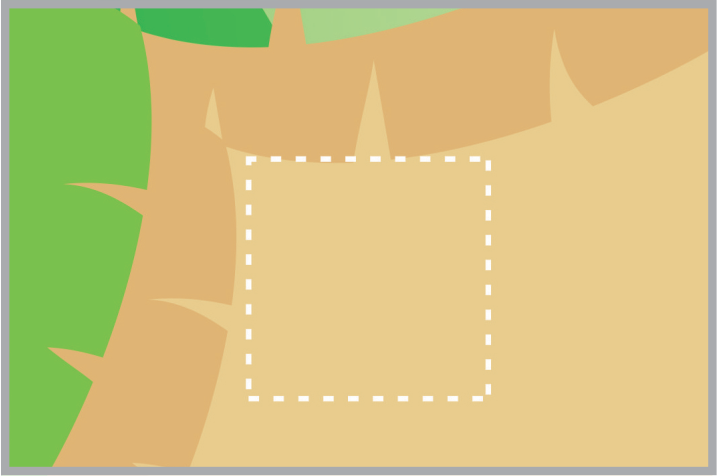
Pick Up Zone

Pick Up Zone
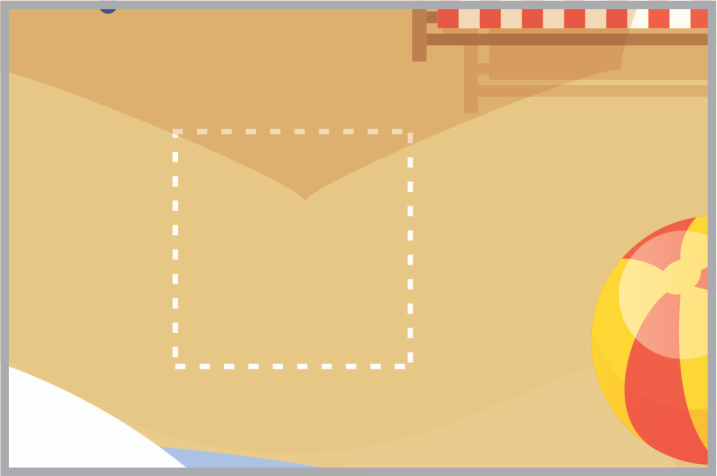
Pick Up Zone
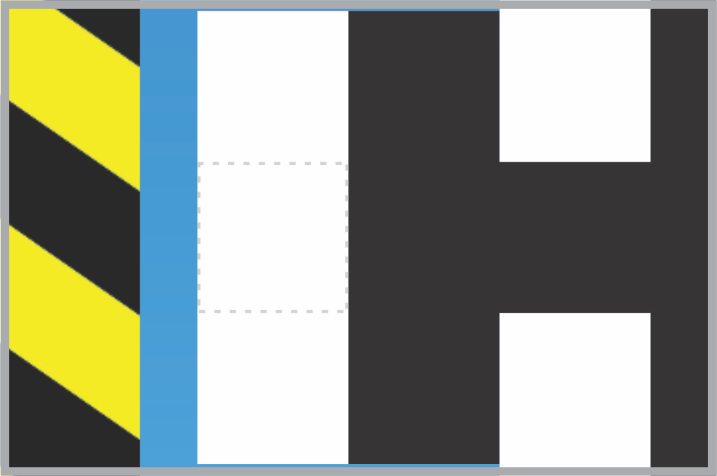
Pick Up Zone 1

Pick Up Zone 2
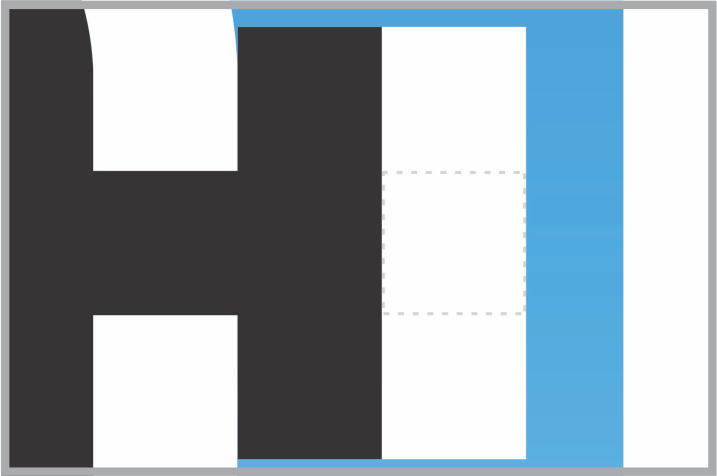
Pick Up Zone 3
Passover Zone
Passover zones are the areas where the autonomous bot should pass the props to the manual bot.

Passover Zone
Cart track
The Cart Track is the area on which the cart needs to be dragged/pulled/pushed by the manual bot.
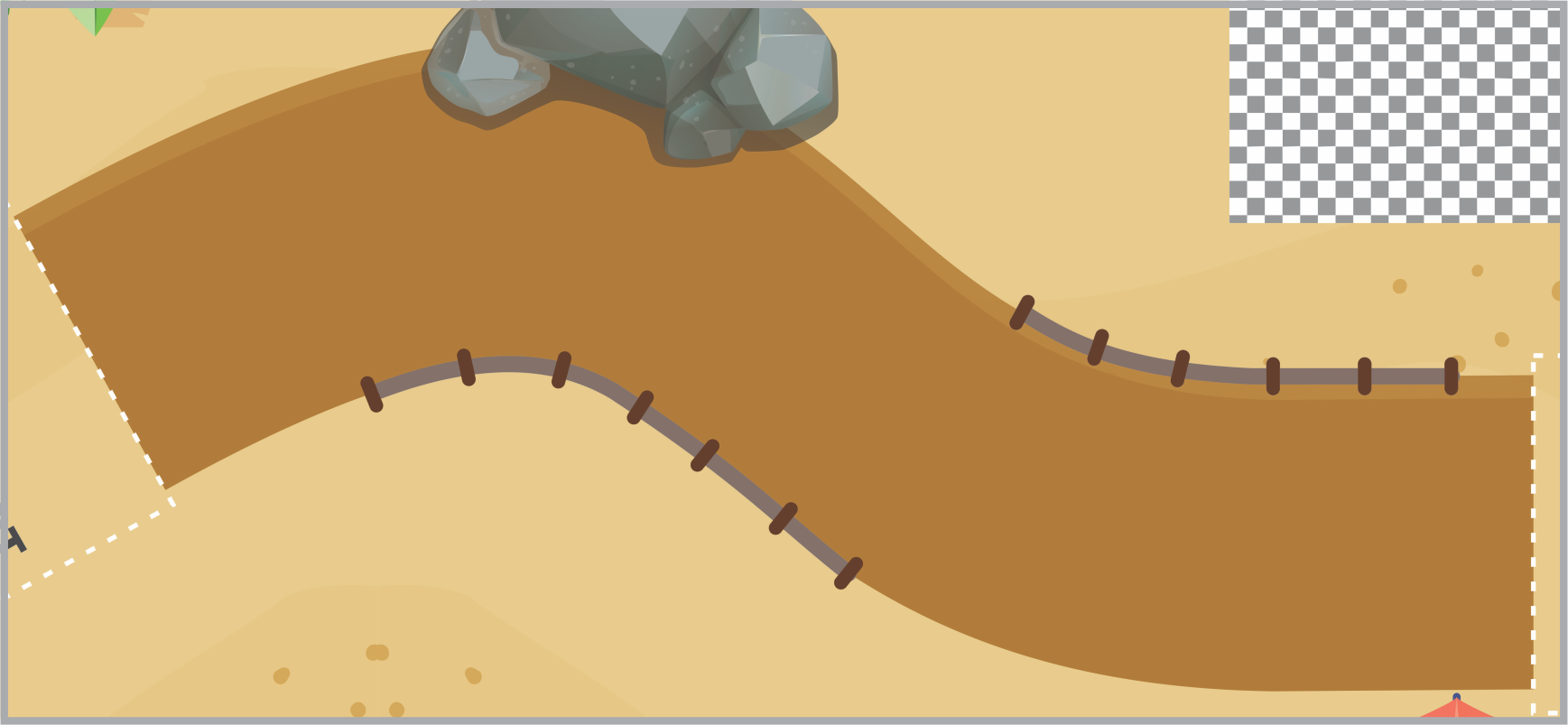
Cart Track
Cart Start Area
The Cart start area is the start area for the cart. And where the cart will be kept at the start of the run.
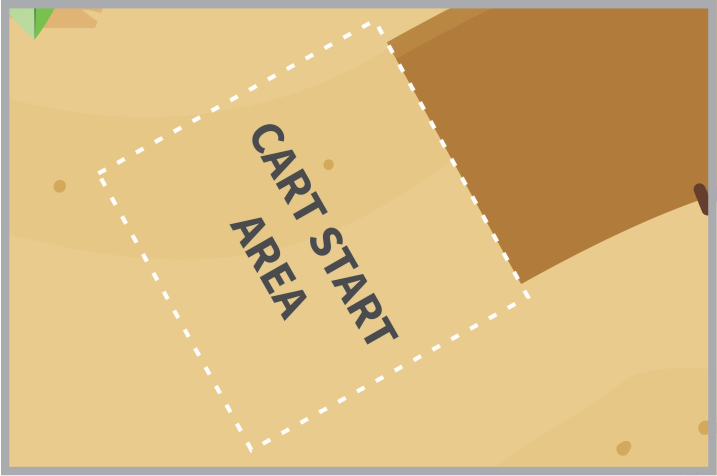
Cart Track Area
Cart End Area
Cart End area is the end area for the cart where the cart will be kept at the end of the run.
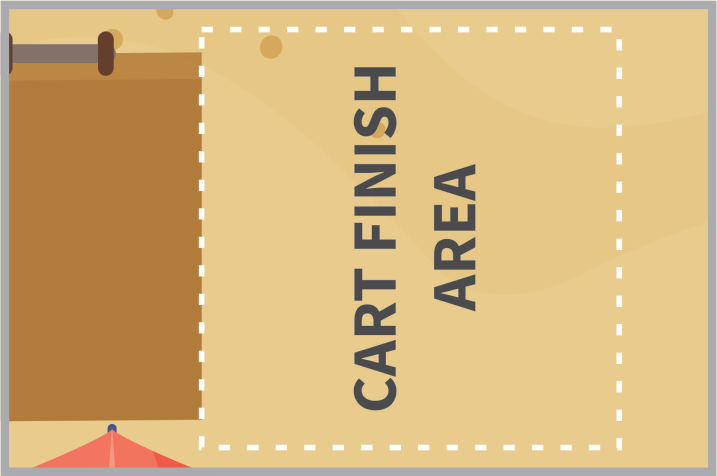
Cart Finish Area
Dumping Zone
The Dumping Zone is the area where all the props need to be arranged at the end of the run.
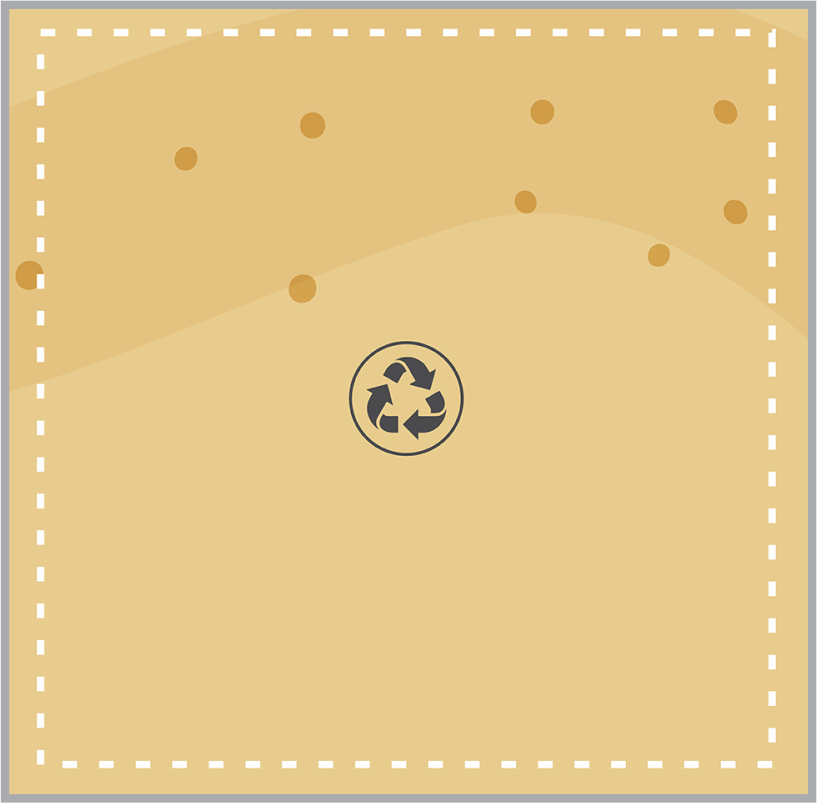
Dumping Zone
Arena Details:
| Arena Length : | 123 Inches(Including Boundary) | 117 Inches(Working Area) |
| Arena Width : | 99 Inches(Including Boundary) | 93 Inches(Working Area) |
| Arena Boundary : | Height - 6 Inches | Height - 6 Inches |
Working Area need to be kept in mind while designing the bots. Bot should never attempt to cross working area. A boundary may be kept along the border (out of working area) and this boundary position and orientation may differ from Arena to Arena and time to time. It shouldn't matter to bots being designed by keeping working area in mind.
Arena Details
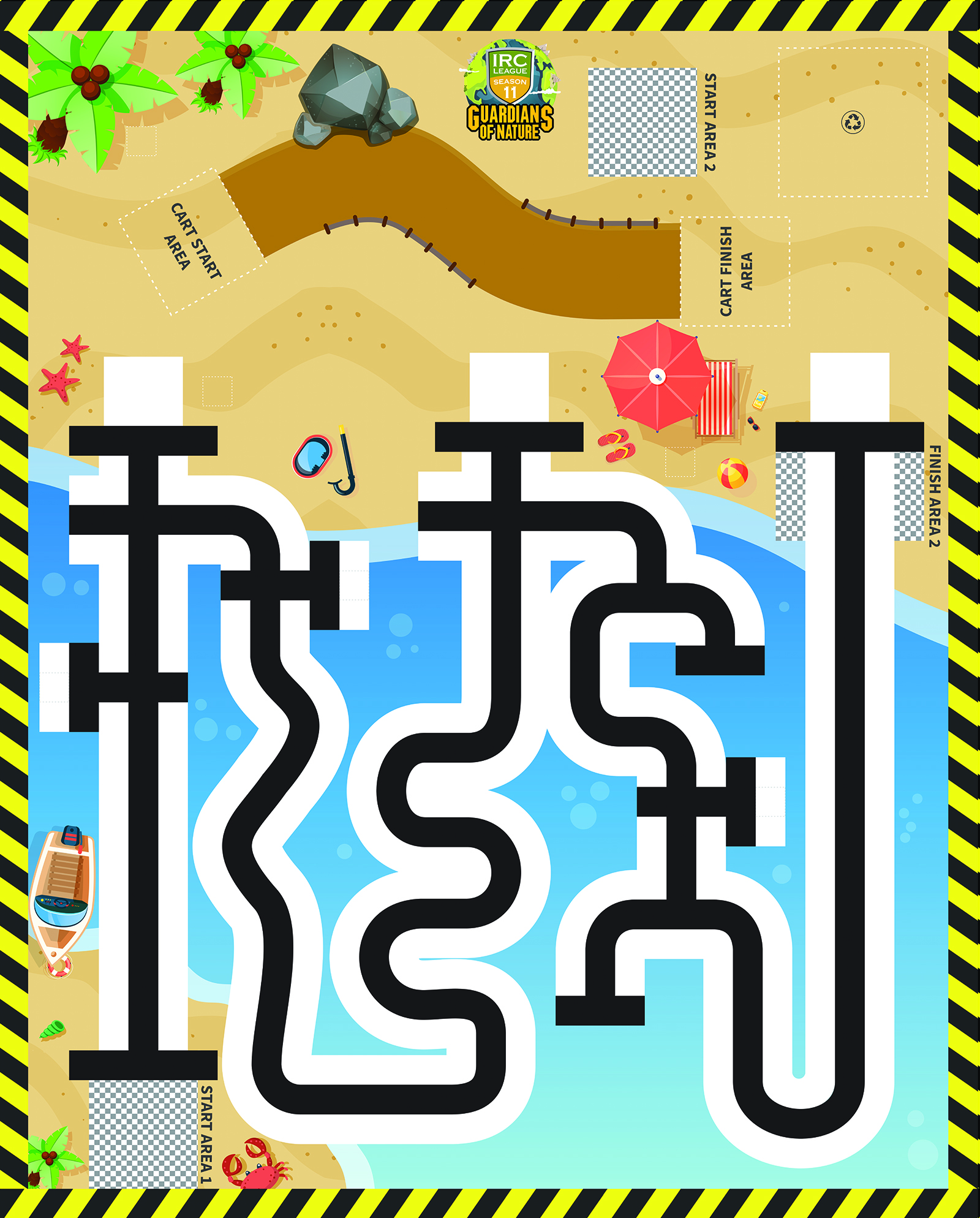

Prop Details
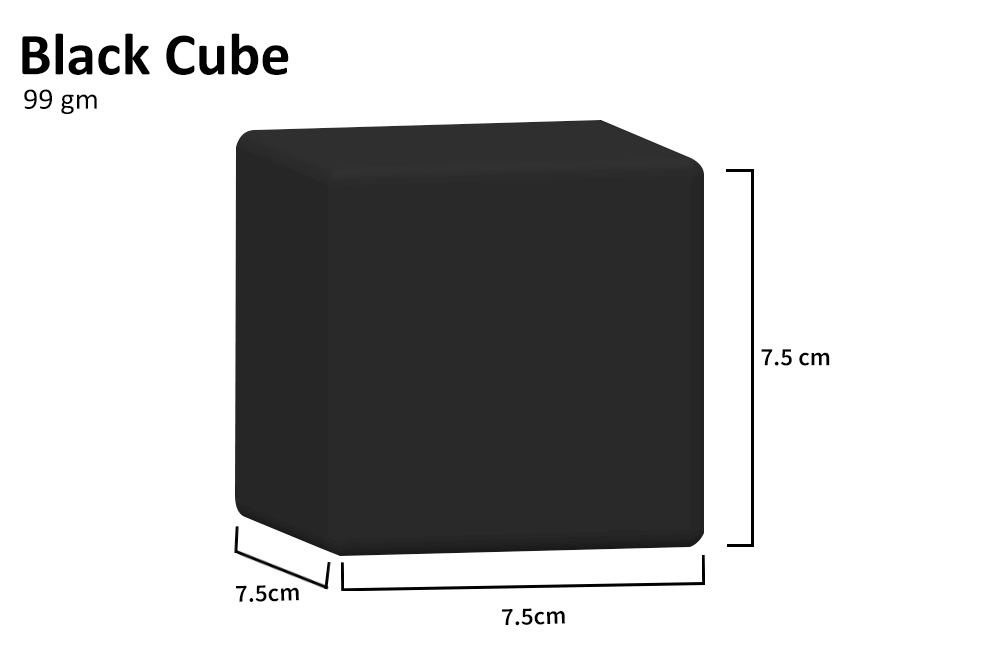
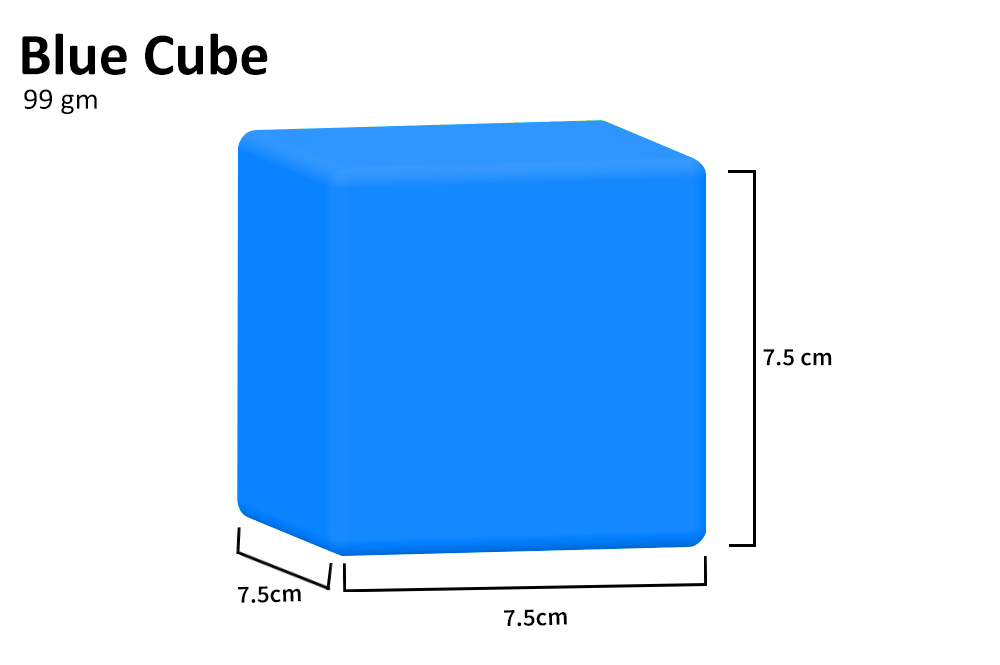
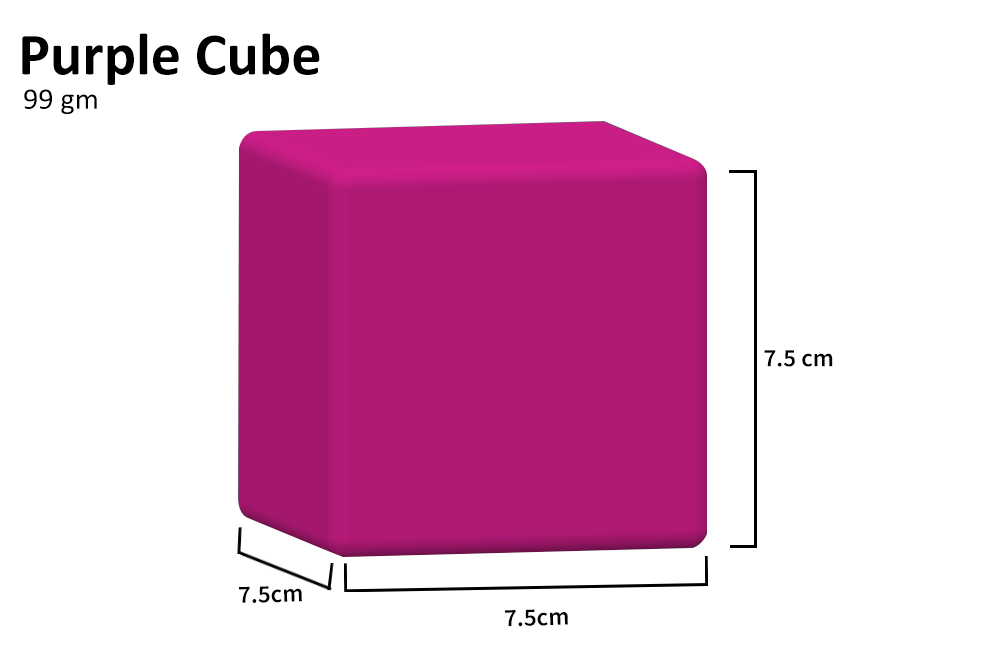
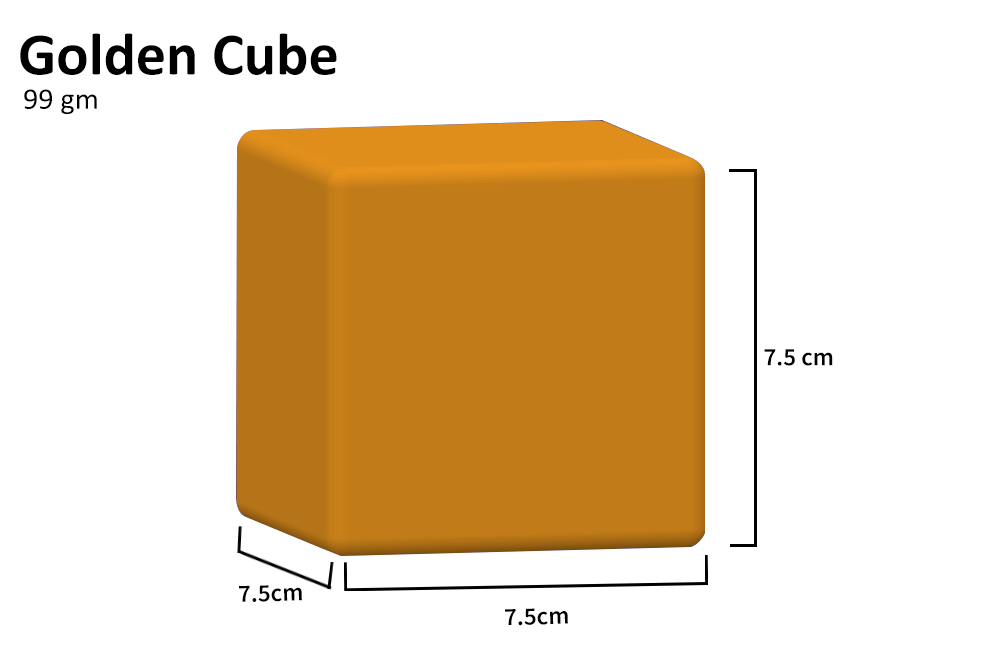
Props Description
The total number of props will be 6, distributed in the manner given below
| Prop name | Colors | 3-D Printing Details |
|---|---|---|
| Stone | Any | Layer Height: 0.3mm Shell Thickness: 1.2mm Infill type: Hexagon Infill Density: 8% Print Speed: 60mm/s 3-D File: GX OBJ |
Stacks: Figures
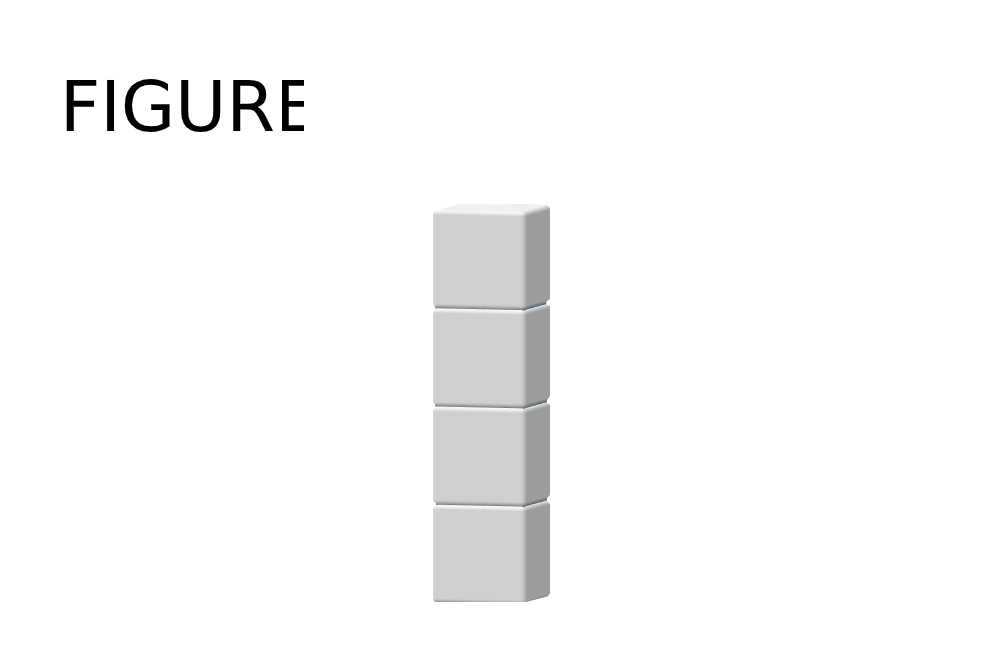
Arena Tasks
Tasks of Bot 1:
- Start Position: Start Area 1
- Bot 1 needs to follow the track and pick up the prop from pickup zone 1 and place it completely inside the passover zone 1.
- Then continue following the track Bot 1 needs to pick up the prop from pickup zone 2 and place it completely inside the passover zone 2.
- And finally bot 1 needs to pick up the prop from pickup zone 3 and place it completely inside the passover zone 3 (while following the track)
- End Position: Finish Area 1
Tasks of Bot 2:
- Start Position: Start Area 2
- Bot 2 needs to pick up all the 3 props from the passover zones and place it inside the cart.
- Bot 2 will then have to pick up all the other 3 props from the pickup zones on the beach area and place it inside the cart.
- The cart needs to be dragged to the cart end area by bot 2
- Bot 2 has to then place the props from the cart onto the dumping zone as per the scheme described in the section – ARRANGEMENT SCHEME
- Finally the props need to be stacked such that it resembles the stack figure given above.
- End Position: Start Area 2
DEVIATION: There are some restrictions on both the bots. Bot 1 must not leave the track at any time in between the run. And bot 2 must not come over the track area. Doing so will be counted as another deviation.
NOTE: The cart can only be loaded in the cart start area and can only be unloaded once it reaches the cart end area. Failing to do so will be counted as another deviation.
NOTE: There is no colour sequence for stacking the Figure. The stacks must structurally resemble the Stack Figure.
NOTE: The cart can be used to transport all the props either at once, or the cart can transport some props to the dumping zone at a time and come back to the cart start area so that it can be loaded again. Subsequently, the remaining number of props can be transported to the dumping zone again.
Arrangement Scheme
Each coloured prop corresponds to a particular weight as mentioned below
Dumping Zone
The Dumping zone will be having a particular weight allowance and space i.e. only a fixed amount of equivalent weight and number of props can be accepted in the dumping zone. The capacity of the dumping zone is to accommodate only 4 props.
For Example,
if the weight allowance of the dumping zone 550 kg. The manual bot can place 3x golden and 1x purple prop in the dumping zone.
Total weight calculation
3x golden = 450 kg
1x blue = 50 kg
Total weight = 550 kg
Total number of props in the dumping zone = 4
Note:Team has to take care of the fact that only 4 props can be accomodated in Dumping zone and rest of the props must rest inside the cart
The weight allowances of the dumping zone will be a random selection and will be decided at the arena (before the run).
The link is also available to everyone for practicing. The teams must do the correct calculation to arrange the props in the correct manner and score points.Click Here: Weight Allowance
Important Points during the run
- It is the responsibility of the team to make sure they call DONE when the structure is ready and well within the designated areas.
- "Calling out DONE" doesn't necessarily mean to call out the word done, it means that the team should indicate to the referee in any way that the team is done with the run and would want to get the scores.
- Bonus points will be awarded only when all the tasks of the run are completed fully. This also means that the second run will not be provided.
Bot 1 and Bot 2 need to have their names on them.
Scoring
Type of Scoring - Mid match / End of match
| Task description | Score for each prop | Total Score |
|---|---|---|
| Successfully able to collect the prop from collection zone (Points will be awarded for each prop) by Bot 1 Scoring Method: Mid Match |
51 | 153 |
| Successfully able to reach the Passover zones and place the props inside the Passover zones (Points will be awarded for each prop) by Bot 1 Scoring Method: Mid Match |
51 | 153 |
| Successfully able to collect the prop from the Passover zone (Points will be awarded for each prop) by Bot 2 Scoring Method: Mid Match |
51 | 153 |
| Successfully able to place the props inside the cart (Points will be awarded for each Stone) by Bot 2 Scoring Method: End Match |
60 | 360 |
| Successfully able to stack the props in the dumping zone by bot 2. NOTE: 45 points will be awarded for each prop stacked correctly as per the Stack Figure. No points will be awarded if the stack is not or partially inside the designated zone. Scoring Method: End of Match |
45 | 180 |
The Scoring Methods
There are two ways scoring can happen for a run:
- END-OF-MATCH SCORING -Most of your score depends on the conditions/design of props/arena exactly at the end of the match. Following are important reference points for this kind of scoring:
- The arena/props are the evidence of most of your score. When the run ends, PLEASE DON’T TOUCH ANYTHING! The referee first needs time to record the condition of the arena on a score sheet and come to an agreement with you (students only) about what points were scored or missed and why.
- Points aren’t given for results the robot produces during the match but then disturbs before the end. For example, you might have kept a prop at a designated location during the run, but in a bid to complete other tasks, if that prop is disturbed and stays in that situation at the end of the match, no scores will be rewarded.
- If a team agrees with the score, the team’s leader needs to sign the sheet, and the score is final.
- If you don’t agree, tell the referee nicely. Referees can be wrong, and when they are, they want to know.
- If still there is a conflict, you need to tell the referee then follow the Conflict Raising process.
- After a short discussion, if the referee is not sure about the score, the Chief Referee will make the final decision.
- MID-MATCH SCORING -If a team’s score is permanently determined during the match, instead of at the end.
- EXAMPLE: When a mission is required to be achieved through a specific method but is achieved by some other method, it is marked scoreless. Please don’t try to show the video to the referees.
- EXAMPLE: If the robot puts Model A into a scoring condition by destroying Model B, the Model B mission is marked scoreless and vice versa.
- EXAMPLE: If the robot is required to drive over something in the middle of the match, the referee will mark the score for that when it happens, since no lingering evidence will be visible.
Bonus Score
If a team is able to finish all the tasks before time (100% of a run), a score of 5 points will be added with every 5 seconds of the time left. For example: From the total time of 4 minutes, if the task was completed at 3 minutes 30 seconds mark, so 30 points will be added to the final score.If the task was completed at 3 minutes 34 seconds so 25 points will be added to the final score.
Conflict Process
- If a team agrees with the score, the team’s leader needs to sign the sheet, and the score is final.
- If you don’t agree, tell the referee nicely. Referees can be wrong, and when they are, they want to know.
- If still there is a conflict, you need to tell the referee and then follow the Conflict Raising process.
- In such situation, the case will be referred to Chief Referee. Chief Referee’s decision would be final and binding.
- After a short discussion, if the referee is not sure about the score, the Chief Referee will make the final decision.
Middle Level Rules and Regulations
- The duration of the run will be 4 minutes and there won't be any trial time provided for the run on the event day.
- Deviation: If a robot deviates from the line, the deviated robot will be kept at the respective start area and the props (if they were attached to the robot in some manner) to their respective start locations and points would be awarded to the team.
- If a robot deviates from the line, the deviated robot will be kept at the start area. The team needs to decide if they want to keep another robot also at that start level. Even if both robots are kept at Start areas it will be marked as 1 deviation.
- A total of 1 deviations (2 runs) are allowed during the whole arena run of 4 minutes. Remember this count (2) is for both the bots. In such a situation, the run need to start again and the referee would bring the deviated bot to its respective start area.
- No time will be paused in case the robot deviates from its path.
- Only Avishkaar kits are allowed to build these robots.
- A power source of 7.4 Volts and 2200 mAh current is allowed in the bots.
- Participants can touch the robots only when they are in the Start areas (Overruling this can lead to disqualification) and nowhere else. They can repair their robots at the start area in case of damage in the robot and no time will be paused.
- If robots got stuck with each other or toppled over, only the referee will keep the robot at the respective start area/areas.
- If any of the robots go out of the arena, the referee would bring it back to the respective Start area and the arena props (if they were attached to the robot in some manner) to their respective start locations and no points would be awarded to the team.
- During the arena run if by any means the arena/props got damaged then the referee can disqualify the team.
- If a team is able to finish all its tasks before time, a bonus of 5 points per 5 seconds will be added to their final score.
- Both robots should be identifiable preferably by a sticker.
- It is mandatory to mention Name and Number on your bots. (For example: Transporter 7)
Interpretation
- Problem statement guidelines are to be interpreted in the form they are presented, so please take them in a literal sense whenever possible.
- Do not interpret the guidelines based on your assumption, or how a situation might be in
real-life
. - If a detail isn’t mentioned, then it doesn’t matter.
- There are no hidden requirements or restrictions. If you’ve read everything, then you know everything.
Examples
- If a task requirement is to collect the prop, it means the prop should be in control and attached with the robot.
- If a mission requirement is to place the prop at the designated location, it means the prop should be completely inside the designed area. Points will not be awarded if it is partially inside or on the line.
- You’re encouraged to think this way - Please learn the requirements and constraints very well, tasks need to be done as explained in the task description only.
Variability
As you build and program, keep in mind that our suppliers, mentors, and volunteers try very hard to make all arena correct and identical, but you should always expect some variability (i.e. tolerance of 5%), such as:
- Flaws in the arrangement of border walls i.e. boundary mats.
- Variety in lighting conditions, from hour to hour, and/or arena to arena.
- Texture/bumps under the mat, due to imperfections, seams, or props.
- Presence or absence of tape at the edges of the Arena and Props.
- Waviness in the arena - at many competitions, it’s impossible for the arena to be rolled out in time to lose their waviness. Location and severity of waviness vary.
- Two important building techniques you can use to limit the effects of variability are:
- Use caster wheels while building your robot to avoid bumps in the Arena.
- Cover your sensors from surrounding light.
Explanation of the parts that can be used
Brains: There is no limitation on the number of brains used per robot. Choose only from the Avishkaar-manufactured ones.
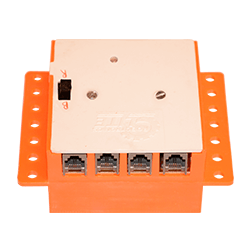
CP Lite Brain
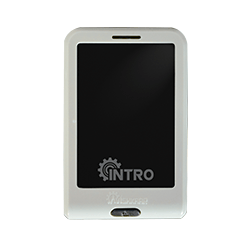
E-Series Intro Brain
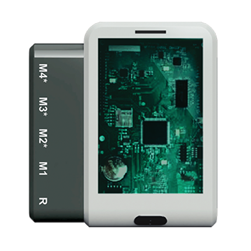
E-Series Lite Brain
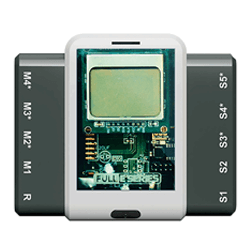
E-Series Full Brain
Sensors: You are allowed as many sensors as you like, but the types are limited to touch, infrared, color, sound, ultrasonic or temperature. Choose your favorite combination from among the Avishkaar-manufactured ones shown here. No other sensors are allowed.
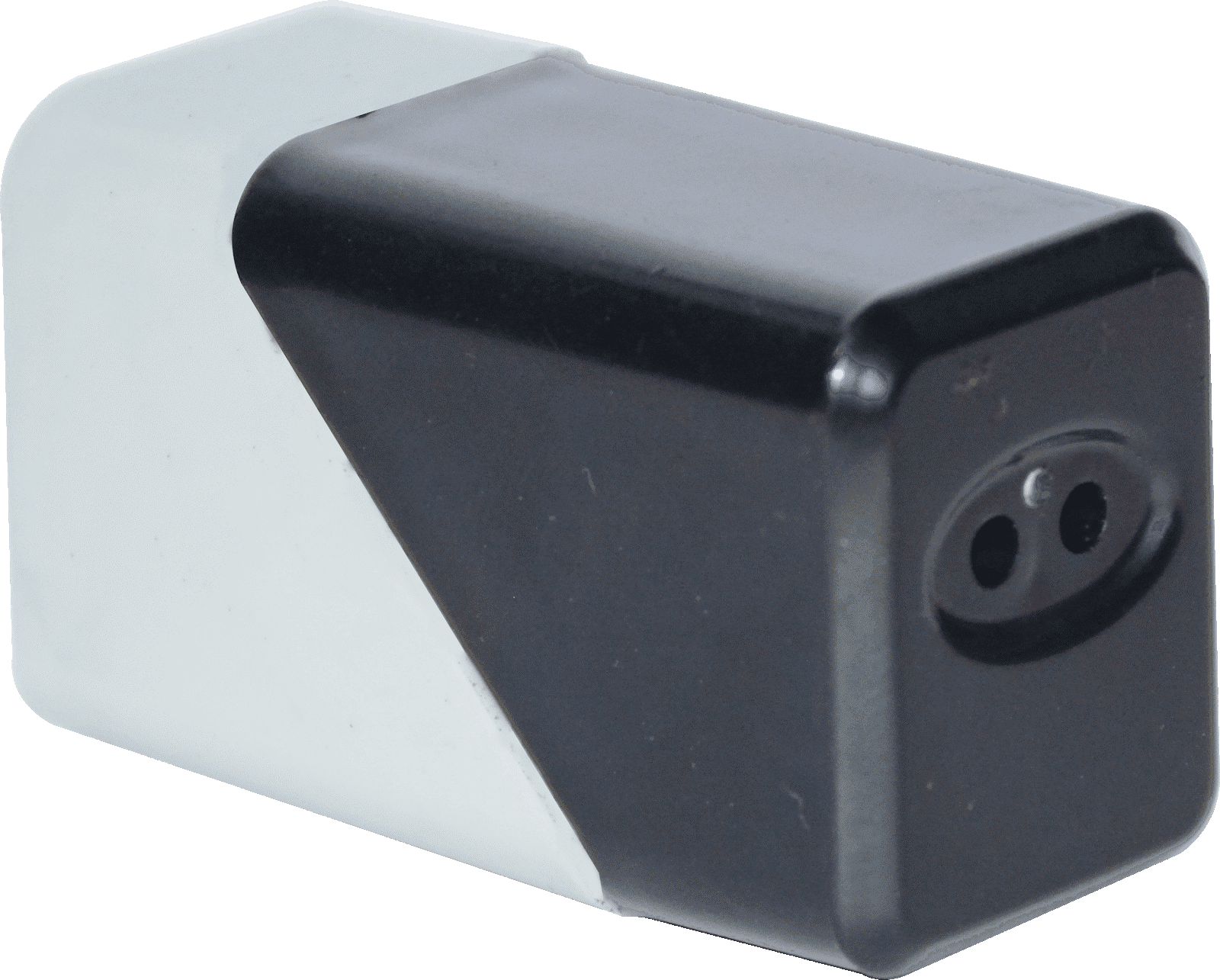
IR Sensor
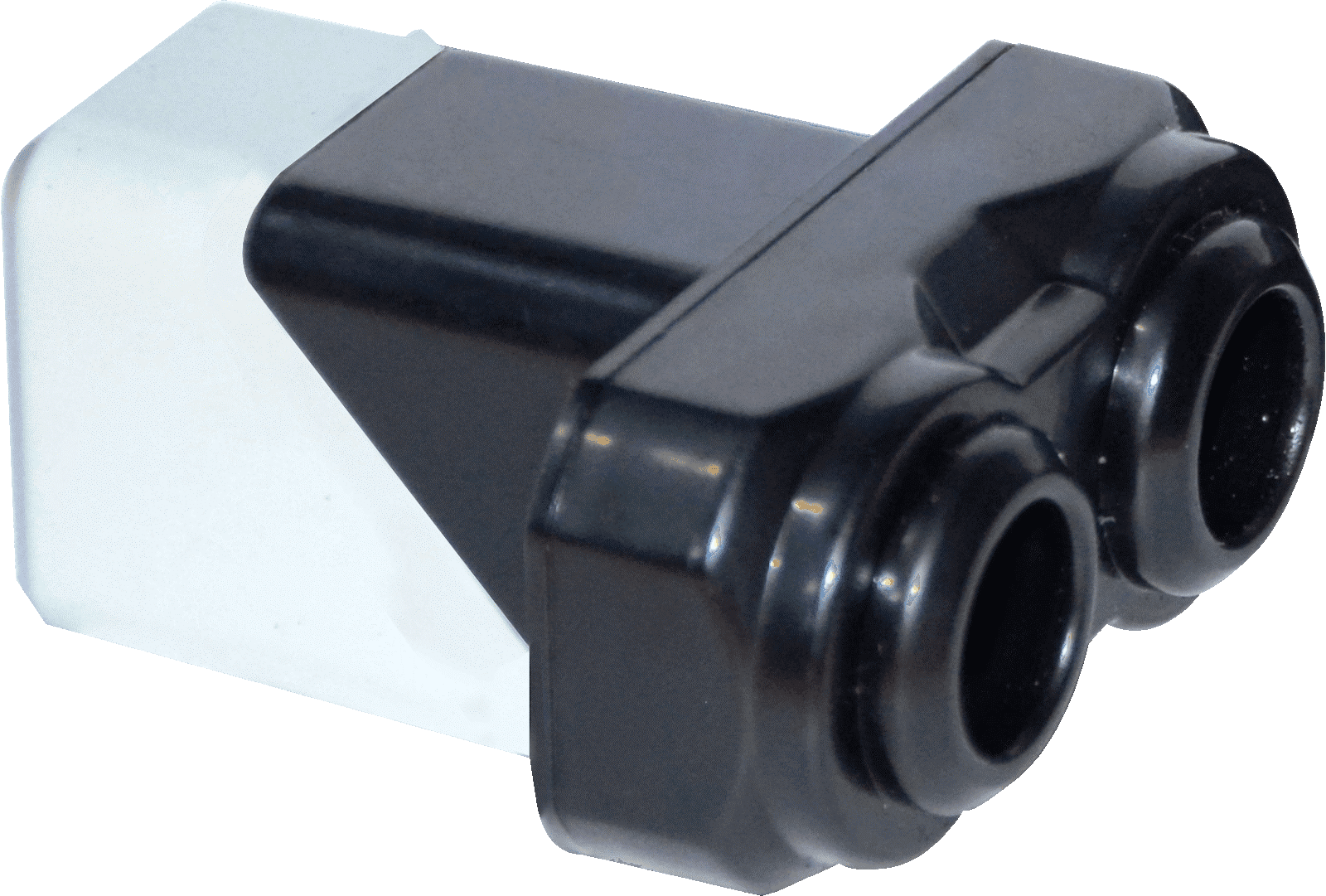
Ultrasonic Sensor
Motors: There is no limitation on the number of motors used per robot. Choose among the Avishkaar-manufactured ones. No other motors are allowed.
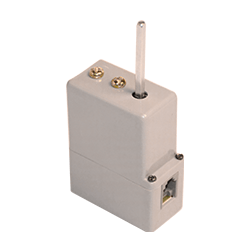
Geared Motor
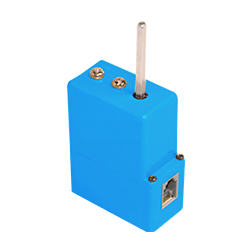
Encoded Motor
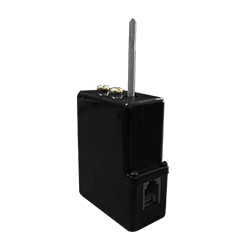
Geared Motor
Reference for the placement of props/Robots
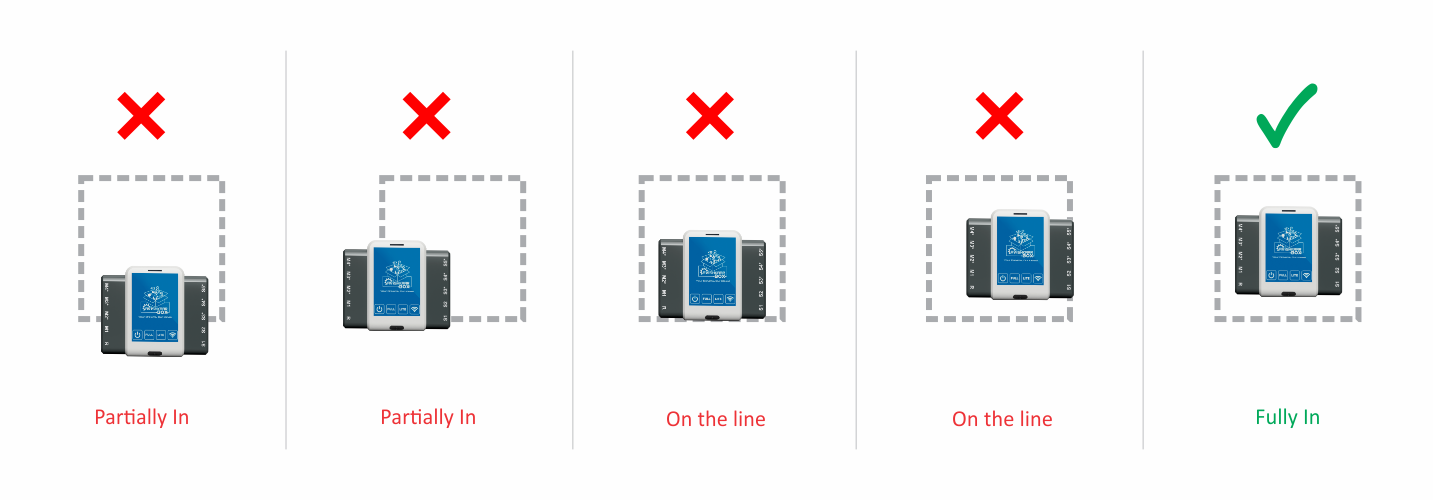
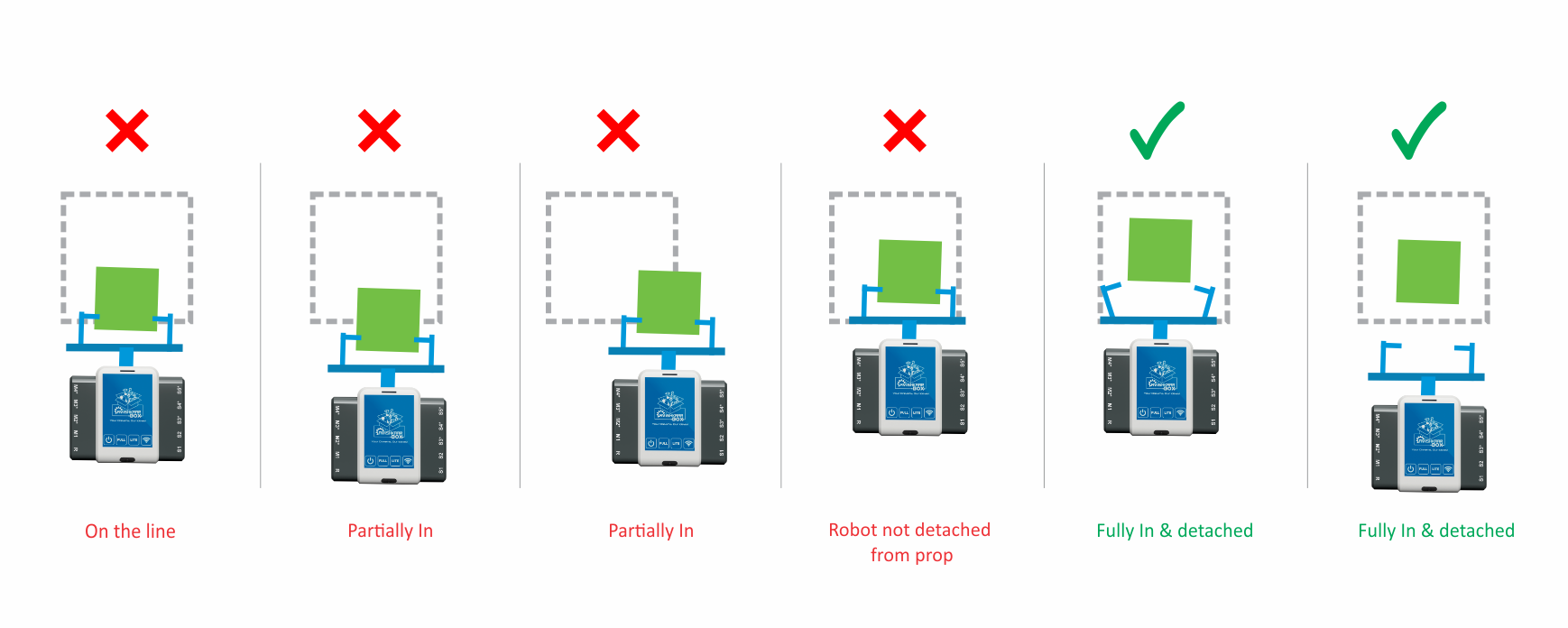
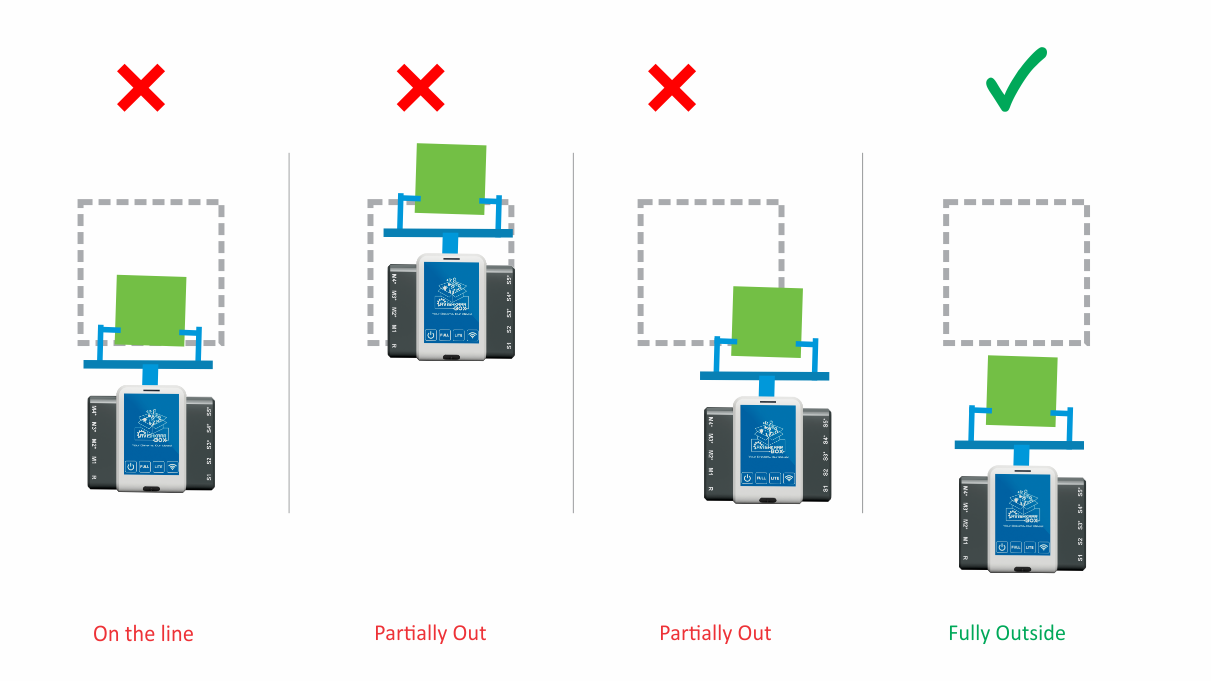
Verification of Robots
|
Note: The design shown in the image is a graphical image and no design reference must be drawn from this. For your design, please refer to the exact size details of the verification prop. Note: Bot should sit comfortably on the floor while verification. Any part of the bot in the air would be liable for rejection. Note: The wheels of the bots need to be clean and shouldn't have any greasing or other material. Such actions can cause damage to the Arena and these bots will be rejected during verification. Note: Only Avishkaar Original Products are allowed. Any tempering with any product in any way is strictly prohibited. If a team is found guilty of such offence, will be barred from the IRC. |

